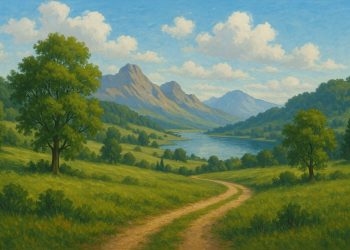Challenger safety is when employees feel free to speak up and challenge ideas at work without fear. Companies that encourage this see faster innovation, happier employees, and more profits. Real-life stories show that even junior staff can save millions if they feel safe sharing their ideas. Organizations like Pixar and Toyota have created simple ways for anyone to raise concerns, leading to big improvements. Small changes, like asking better questions and letting everyone share ideas, help build a stronger, safer company culture.
What is challenger safety and how does it drive enterprise culture and ROI?
Challenger safety is a workplace culture where employees feel empowered to question the status quo and challenge both peers and leaders without fear. Companies fostering challenger safety see measurable benefits: faster innovation, lower turnover, cost savings, and higher revenue, making it a key ROI driver in modern enterprise culture.
- Challenging Up and Across: How Everyday Leaders Are Quietly Re-shaping Company DNA*
In the summer of 2024, a junior product analyst at a Fortune 500 consumer-goods firm noticed a flaw in the pricing algorithm her team had relied on for three years. Rather than escalating through the normal ticket queue, she pulled the VP of Commercial Strategy into a 15-minute video call, walked him through the error, and proposed a fix that saved an estimated $2.3 million in margin. The VP later admitted he had never imagined a first-year hire would correct him in front of peers – yet the firm now cites that moment as the tipping point for a culture that out-innovated its closest rival by 18 % in 2025.
Stories like this are surfacing across industries, revealing an emerging leadership playbook: growth is driven less by grand strategies and more by the willingness of employees at every level to challenge both peers and superiors in constructive ways.
Why Courage Is the New Competency
Research released in January 2025 by the Boston Consulting Group found companies with high psychological safety (measured through anonymous pulse surveys) enjoy:
| Metric | High-Safety Teams | Low-Safety Teams |
|---|---|---|
| Voluntary turnover | 3 % | 12 % |
| Time-to-market for new products | 29 % faster | Baseline |
| Employee-reported innovation score (0-10) | 8.1 | 5.3 |
Source: BCG Psychological Safety Report, 2025
Yet the same study shows only one in four managers receives any formal training on how to invite and manage dissent.
From Water-Cooler Whisper to Boardroom Benchmark
Here’s how three organizations moved from ad-hoc pushback to institutionalized challenge:
-
1. Pixar’s “Braintrust Lite” – extending candor beyond executives
After the success of its director-level Braintrust, Pixar created micro-sessions where any crew member can flag story or process issues. Since the program launched in late 2023, the studio’s post-release patch rate* (digital fixes after premiere) dropped by 42 %. -
2. Toyota’s Andon Cord 2.0 – virtual escalation in hybrid plants
An AI chatbot now routes frontline concerns straight to shift supervisors; if unresolved, the issue auto-escalates to plant leadership within 60 minutes. The average safety incident close-out* time shrank from 6 days to 21 hours. -
3. BCG’s promotion rubric – empathy as a KPI
Middle managers are evaluated annually on how well they solicit and act on dissenting views. Promotion data from 2024 show that leaders scoring in the top quartile on this metric were 2.6× more likely* to advance to the next level.
Leaders Who Model the Behavior
- Satya Nadella (Microsoft) – instituted “CEO Connection” hours where any employee can book 15 minutes to challenge strategic decisions. Last year, 312 ideas surfaced; 19 shipped as product features.
Four-Stage Blueprint for Building Challenger Safety
Based on 2025 field studies published by Edstellar and the Center for Creative Leadership:
| Stage | What It Looks Like | Practical Nudge for Leaders |
|---|---|---|
| *Inclusion * | People feel accepted regardless of background | Kick-off meetings start with a 2-minute “personal context” round |
| *Learner * | Questions & mistakes welcomed | Replace “post-mortem” with “pre-mortem” – discuss what could fail before launch |
| *Contributor * | Individuals volunteer ideas unprompted | Use silent “idea boards” in hybrid meetings (Miro, Mural) before verbal discussion |
| *Challenger * | Employees question status quo without fear | End every project review with “What would we cancel today if we weren’t afraid?” |
Full guide: Edstellar: Psychological Safety at Work – 2025 Guide for Leaders
The Economic Argument No CFO Can Ignore
A 2025 Workplace Options global study covering 1.8 million employees found that every 10 % rise in psychological-safety scores correlates with:
- 1.3 % uplift in quarterly revenue per employee
- $4,600 annual cost saving per knowledge worker via reduced burnout leave
- 27 % faster crisis recovery (measured by time to restore pre-crisis output levels)
Source: Workplace Options Leadership Blueprint, 2025
Small Habits, Big Pay-off
- Replace “Any questions?” with “What’s one risk we’re ignoring?” in stand-ups.
- Add a “Disagree-and-commit” emoji reaction in Slack/Teams for quick, safe dissent.
- Rotate the “devil’s advocate” role weekly so junior voices surface first.
These micro-shifts cost nothing yet compound into the kind of culture where the next million-dollar insight is as likely to come from an intern as from the C-suite.
What exactly is “challenger safety” and why does it matter more in 2025?
Challenger safety is the fourth and final stage of psychological safety where employees feel equally empowered to question the status quo, challenge decisions made above them, and propose bold improvements without fear of retaliation. In 2025 this stage is moving from “nice-to-have” to a financial imperative: a global Workplace Options study shows 93 % of C-suite leaders now believe psychological safety, anchored by challenger safety, directly lifts the bottom line.
Which everyday behaviors signal that challenger safety is present?
Look for micro-moments: a junior analyst pushes back on a senior VP’s forecast with data; a nurse pulls the “Andon cord” to stop a production line over a patient-safety doubt; a remote engineer asks, “What if we sunset this legacy system?” on a public Slack thread and gets thanked instead of sidelined. BCG’s 2024 data found teams exhibiting these behaviors cut turnover risk from 12 % to 3 % and increased idea generation by 27 %.
How can leaders hard-wire challenger safety into performance reviews?
Progressive companies in 2024-2025 are already grading managers on how well they invite dissent. Typical additions to annual reviews include three evidence-based prompts:
1. Frequency – “Cites at least two instances this quarter where you encouraged a direct report to challenge your plan.”
2. Outcome – “Shows how that challenge produced a measurable process improvement or cost avoidance.”
3. Climate – “Provides survey data proving team members feel safe to speak up.”
Boston Consulting Group and Workplace Options both cite these criteria as core inputs to promotion decisions at select Fortune 500 firms.
What new risks appear when AI enters the conversation?
By 2026 AI co-workers will amplify the stakes. Algorithmic performance scores and automated “manager bots” can unintentionally punish candor if not designed with psychological safety guardrails. McKinsey’s early pilots show that when AI feedback loops are transparent and employees can contest an AI judgment, trust scores rise 19 %; when black-boxed, speak-up rates fall 34 %. The takeaway: challenge the AI, too – and make the rules of engagement visible to everyone.
Which quick wins create space for constructive challenge this quarter?
No budget? Three zero-cost moves still move the needle:
– Kickoff reset: Start every project meeting with “What could derail us and who dares name it?”
– Blameless post-mortems: After any miss, open with the leader admitting a personal oversight first.
– Recognition loop: Close Wednesday stand-ups by spotlighting one instance of productive dissent that saved time or money.
Niagara Institute’s 2025 pulse survey shows teams using these rituals report 22 % higher engagement within 90 days.



















